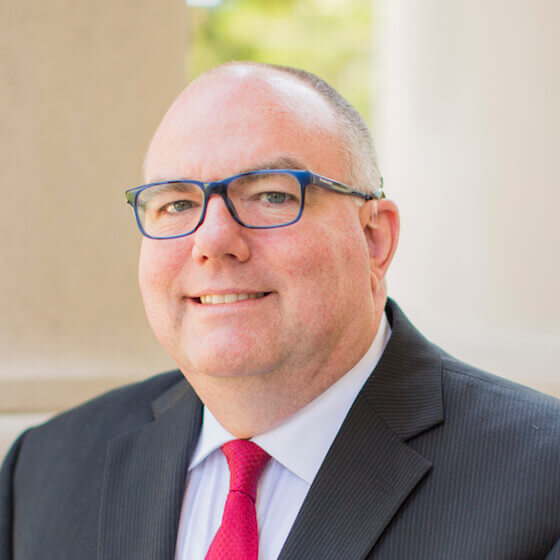WEST LONG BRANCH, N.J. — (June 21, 2017) — Jon Stauff is determined to grow the global footprint of Monmouth University. In the 16 months since he became the university’s vice provost for global education, he has nearly doubled the programming of the international office and taken a more intentional approach toward study abroad.
“I’ve tried to change the orientation to helping prepare students for academic success and that’s required us to take a more intentional, more mature approach to the delivery of services in this office,” Stauff said.
He also wants to shift the paradigm of study abroad for Monmouth students.
“I say to students who want to study abroad, ‘Yes, it will be the time of your life and yes, you’ll travel yourself nearly to death, but it’s an academic enterprise first and foremost, so what would you like to study?’”
Stauff has created a peer advising group called GEMS (Global Education Mentors) that works with students returning from an academic experience abroad and is looking to more fully integrate the study abroad curriculum into the on-campus curriculum. “I want to use our international partners more intentionally so students can bring those experiences home with them and inform the rest of their Monmouth experience.”
In addition to overseeing programs at home, Stauff maintains an extensive international travel agenda.
“I’ve been to Italy, England, Spain and Australia; Germany, Argentina, China twice, India once. And I’m going back to India and China before the end of the calendar year. We’re also expanding our network of ambassadors so that we continue to have new faces on these trips.”
Stauff said he would eventually like to have a cadre of 20 to 30 people who could represent the university internationally.
“We need to continue to touch base in places where we have rich partnerships already established — like China and India and Vietnam — so that we can continue to grow international enrollments, but,” he added, “there are wide swaths of territory where we must develop a robust, mobile-friendly, digital presence, so we’re working on that, too.”
One international program that Stauff likes to brag about is the alternative break program overseen by international student advisor Corey Inzana. Stauff calls it “the jewel in our crown.”
“Over the years, it’s become a part of the Monmouth fabric. It’s one of those things that we do very well. Corey does a lot of good work. He sustains it over time and he does it in a culturally sensitive way.”
Inzana said that the program grew out his own involvement in an alternative break program as an undergraduate, an experience he called, “the most significant thing I had participated in during my entire college career.”
He persuaded the administration to allow him to create a pilot program in Guatemala and he recruited 12 students to join him on that trip. Those original 12, said Inzana, were “our biggest marketing agents and the impact this program had on them continues to impact the campus community.”
Today, after seven years and 15 trips, more than 250 students have participated in the program.
Inzana said that he selects two or three returning students to create a leadership team for each trip and builds the cohort around them. The process has become quite competitive. Between 150 and 200 students vie for the available spots each year.
He said that he believes the program was originally successful because of the hand-picked group of students and that it continues to be successful, “because of our intentional 12-month model that creates a transformative experience.”
Stauff, however, credits Inzana himself.
“Corey’s work has an emotional connection that I didn’t quite have [in programs at other institutions],” Stauff said. “He has the students bonding among themselves, bonding with the people they’re serving and identifying with the location. They bring that home very effectively and share their experiences effectively with the community at large, and I think it becomes something where, even if you didn’t participate in the program, a student can find pride that his or her institution is engaging in such work.
“Corey really is a best practice.”
The Monmouth University Alternative Break Program currently operates in Nicaragua, Guatemala and Haiti. Inzana said that he continues to run the program because he has seen the impact it has had on the students.
“Student participants will continue a life of giving back and continuous learning. I see the potential these programs have and what our institution can do. We have the students’ support of these programs and they demonstrate that support by promoting them and generating such high interest.
“Also, to be honest, the places we help continue to need support and because we create lasting relationships with these communities, they look forward to [continuing to] interact with our students.”
According to Stauff, the university sends around 300 students abroad each year, which, he notes, is a substantial percentage of the student body given the number of programs currently operating.
However, Stauff is determined to grow and change global education at Monmouth. In five years, he hopes to offer students 15-20 study abroad opportunities with his office becoming “a true Education Abroad office that offers study, internships, service opportunities and a chance to engage in all learning channels. I want a student to have more options that fit their curriculum and their career goals.”

